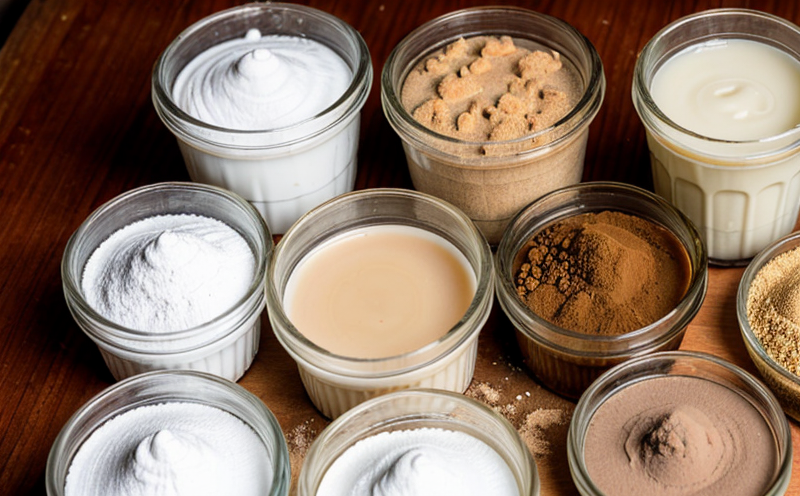Codex CAC/GL 97 Guidelines on Mold Contamination in Cereals
The Codex Alimentarius Commission (CAC) is a joint WHO and Food and Agriculture Organization of the United Nations (FAO) body responsible for developing harmonized food standards, guidelines, codes of practice, and other recommendations. The CAC's Guidelines for the Analysis of Mycotoxins in Foods, including CAC/GL 97, are essential tools for ensuring the safety of foods from mold contamination.
CAC/GL 97 specifically addresses the analysis methods and quality assurance measures necessary to ensure accurate detection of molds in cereals. Compliance with these guidelines is crucial for food manufacturers, regulatory bodies, and import/export operations to meet international standards set by Codex Alimentarius. This service ensures that your products adhere to these stringent requirements, thereby protecting consumer health.
Molds are a significant concern because they can produce mycotoxins—potentially harmful substances—that may be present in cereals. The presence of molds and their associated toxins can compromise product safety, quality, and shelf life. By adhering to CAC/GL 97 guidelines, laboratories like ours provide accurate and reliable mold detection results that are critical for maintaining product integrity.
The process begins with the collection of cereal samples from various sources such as farms, processing plants, or retail outlets. Samples must be handled carefully to prevent contamination before analysis. Once collected, these samples undergo rigorous preparation steps tailored specifically to ensure optimal conditions for mold growth and detection.
For instance, if a sample is suspected to contain Aspergillus species, which are common sources of aflatoxins—a group of potent carcinogenic mycotoxins—specialized media such as Czapek-Dox agar would be used. This medium provides nutrients necessary for the growth and identification of these molds.
The next step involves incubating the samples under controlled conditions, typically at 28°C to 30°C, which is optimal for mold development. During this period, skilled analysts monitor changes in appearance and other characteristics indicative of mold presence. Once identified visually or through microscopic examination, further quantitative analysis may be required using advanced techniques like high-performance liquid chromatography (HPLC), gas chromatography-mass spectrometry (GC-MS), or other appropriate methods.
The accuracy and precision of mold detection directly influence the reliability of test results. Therefore, our laboratory adheres strictly to CAC/GL 97 recommendations throughout every stage of the process—from sample handling to final reporting. This commitment ensures that we consistently deliver high-quality data compliant with international standards.
Compliance with these guidelines not only helps manufacturers maintain their reputation but also supports global trade by ensuring consistency across borders. Understanding and implementing CAC/GL 97 is essential for those involved in food safety, quality assurance, research & development (R&D), and procurement within the food industry.
Applied Standards
The Codex Alimentarius Commission's Guidelines for the Analysis of Mycotoxins in Foods (CAC/GL 97) provide detailed instructions on how to conduct mold analyses according to internationally recognized practices. These guidelines cover essential aspects such as:
- Sample Collection and Handling: Proper procedures ensure that samples are not contaminated during collection or transport.
- Preparation Methods: Specified techniques prepare samples for effective analysis, including methods like filtration, centrifugation, and dilution.
- Incubation Conditions: Optimal temperatures and humidities promote mold growth while minimizing interference from other microorganisms.
- Analytical Techniques: Recommended methods include culture-based approaches (e.g., agar plating) alongside more advanced analytical tools like mass spectrometry.
- Data Interpretation and Reporting: Clear guidelines ensure accurate interpretation of results, facilitating consistent reporting.
The application of CAC/GL 97 ensures that all stages of mold analysis are conducted accurately and consistently. This standardization is crucial for meeting international food safety standards and maintaining consumer trust.
Benefits
Adhering to the Codex Alimentarius Commission's Guidelines for the Analysis of Mycotoxins in Foods (CAC/GL 97) offers numerous benefits, particularly for organizations involved in food safety, quality assurance, and compliance:
- Enhanced Food Safety: By ensuring accurate mold detection, we protect consumers from potential health risks associated with mycotoxin exposure.
- Improved Reputation: Compliance demonstrates a commitment to excellence, enhancing the reputation of your company in both domestic and international markets.
- Better Regulatory Alignment: Our services align your operations with global food safety regulations, making it easier to navigate complex regulatory landscapes.
- Informed Decision-Making: Accurate data facilitates informed decisions regarding product quality, formulation adjustments, or process improvements.
- Cost Savings: Preventing contaminated products from reaching the market can save significant costs associated with recalls and brand damage.
- Increased Market Access: Compliance opens doors to new markets where stringent food safety requirements are enforced.
- Enhanced Customer Confidence: Transparent and reliable testing builds long-term trust with customers, stakeholders, and regulatory bodies alike.
In summary, the benefits of adhering to CAC/GL 97 extend far beyond mere compliance; they represent a strategic investment in your organization's future success.
Use Cases and Application Examples
The Codex Alimentarius Commission’s Guidelines for the Analysis of Mycotoxins in Foods (CAC/GL 97) find application across various food production, processing, and distribution stages. Here are some practical examples:

Production Stage: During the initial stages of cereals production, mold can be introduced through improper storage conditions or handling practices. Regular testing ensures that raw materials meet quality standards before further processing begins.
Processing Stage: In manufacturing facilities, continuous monitoring helps identify potential issues early on, allowing for corrective actions to prevent contamination throughout the production chain.
Distribution and Retail: Testing at distribution centers or retail outlets ensures that products remain safe until they reach consumers. This is especially important during transportation where temperature fluctuations could affect mold growth.
R&D: For research & development teams, CAC/GL 97 serves as a benchmark for developing new formulations and processes aimed at reducing mold contamination risks.
These use cases illustrate how the implementation of CAC/GL 97 can be integrated into different aspects of cereal production, ensuring consistent quality control measures across all phases.





